Pei Zou
Seed-Music: A Unified Framework for High Quality and Controlled Music Generation
Sep 13, 2024



Abstract:We introduce Seed-Music, a suite of music generation systems capable of producing high-quality music with fine-grained style control. Our unified framework leverages both auto-regressive language modeling and diffusion approaches to support two key music creation workflows: \textit{controlled music generation} and \textit{post-production editing}. For controlled music generation, our system enables vocal music generation with performance controls from multi-modal inputs, including style descriptions, audio references, musical scores, and voice prompts. For post-production editing, it offers interactive tools for editing lyrics and vocal melodies directly in the generated audio. We encourage readers to listen to demo audio examples at https://team.doubao.com/seed-music .
SymPAC: Scalable Symbolic Music Generation With Prompts And Constraints
Sep 04, 2024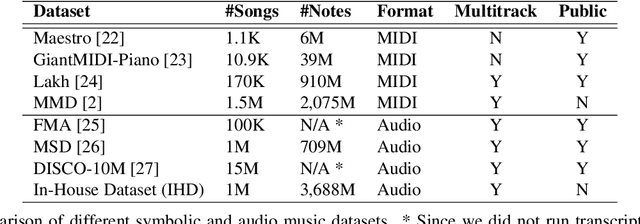
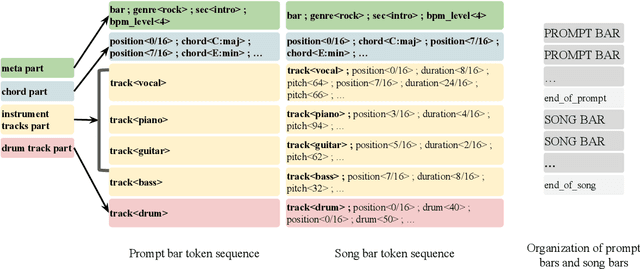
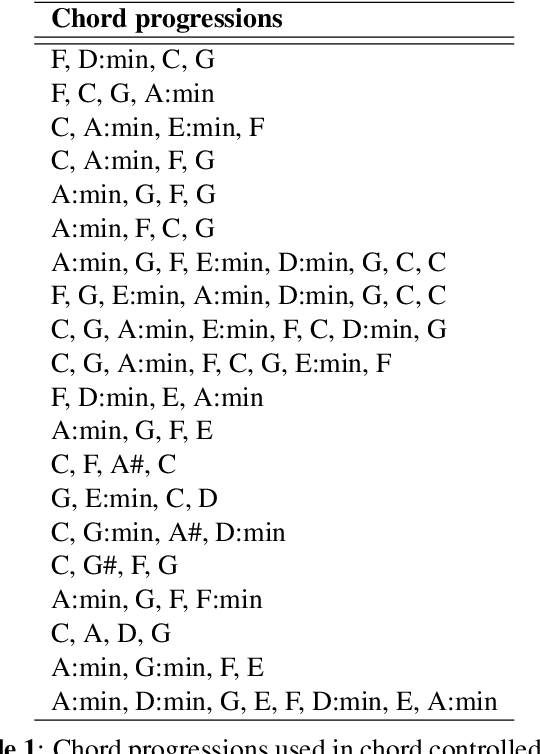
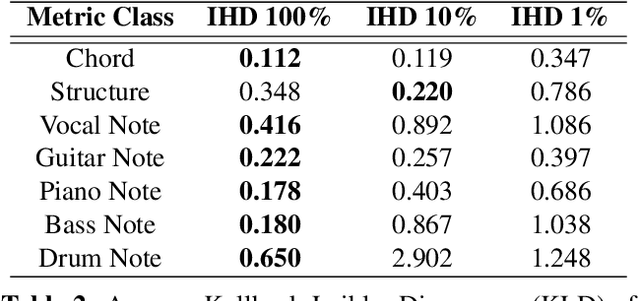
Abstract:Progress in the task of symbolic music generation may be lagging behind other tasks like audio and text generation, in part because of the scarcity of symbolic training data. In this paper, we leverage the greater scale of audio music data by applying pre-trained MIR models (for transcription, beat tracking, structure analysis, etc.) to extract symbolic events and encode them into token sequences. To the best of our knowledge, this work is the first to demonstrate the feasibility of training symbolic generation models solely from auto-transcribed audio data. Furthermore, to enhance the controllability of the trained model, we introduce SymPAC (Symbolic Music Language Model with Prompting And Constrained Generation), which is distinguished by using (a) prompt bars in encoding and (b) a technique called Constrained Generation via Finite State Machines (FSMs) during inference time. We show the flexibility and controllability of this approach, which may be critical in making music AI useful to creators and users.
ByteComposer: a Human-like Melody Composition Method based on Language Model Agent
Mar 07, 2024Abstract:Large Language Models (LLM) have shown encouraging progress in multimodal understanding and generation tasks. However, how to design a human-aligned and interpretable melody composition system is still under-explored. To solve this problem, we propose ByteComposer, an agent framework emulating a human's creative pipeline in four separate steps : "Conception Analysis - Draft Composition - Self-Evaluation and Modification - Aesthetic Selection". This framework seamlessly blends the interactive and knowledge-understanding features of LLMs with existing symbolic music generation models, thereby achieving a melody composition agent comparable to human creators. We conduct extensive experiments on GPT4 and several open-source large language models, which substantiate our framework's effectiveness. Furthermore, professional music composers were engaged in multi-dimensional evaluations, the final results demonstrated that across various facets of music composition, ByteComposer agent attains the level of a novice melody composer.
MELONS: generating melody with long-term structure using transformers and structure graph
Nov 03, 2021

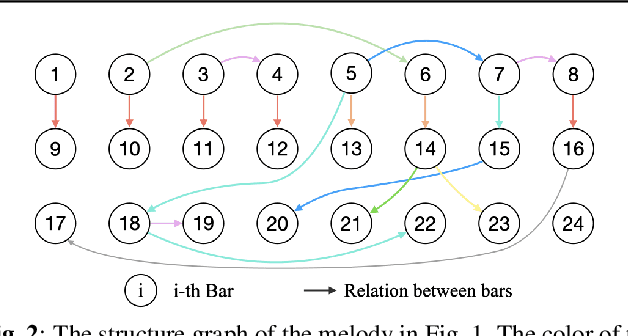
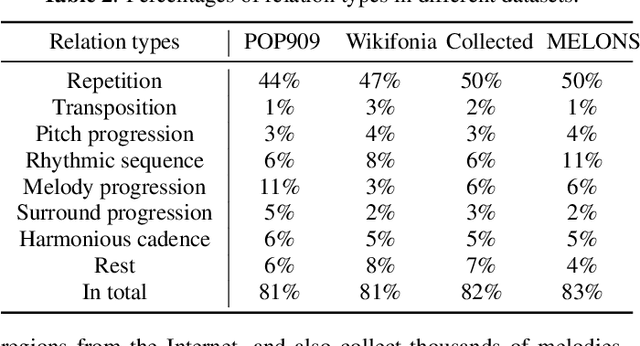
Abstract:The creation of long melody sequences requires effective expression of coherent musical structure. However, there is no clear representation of musical structure. Recent works on music generation have suggested various approaches to deal with the structural information of music, but generating a full-song melody with clear long-term structure remains a challenge. In this paper, we propose MELONS, a melody generation framework based on a graph representation of music structure which consists of eight types of bar-level relations. MELONS adopts a multi-step generation method with transformer-based networks by factoring melody generation into two sub-problems: structure generation and structure conditional melody generation. Experimental results show that MELONS can produce structured melodies with high quality and rich contents.
 Add to Chrome
Add to Chrome Add to Firefox
Add to Firefox Add to Edge
Add to Edge